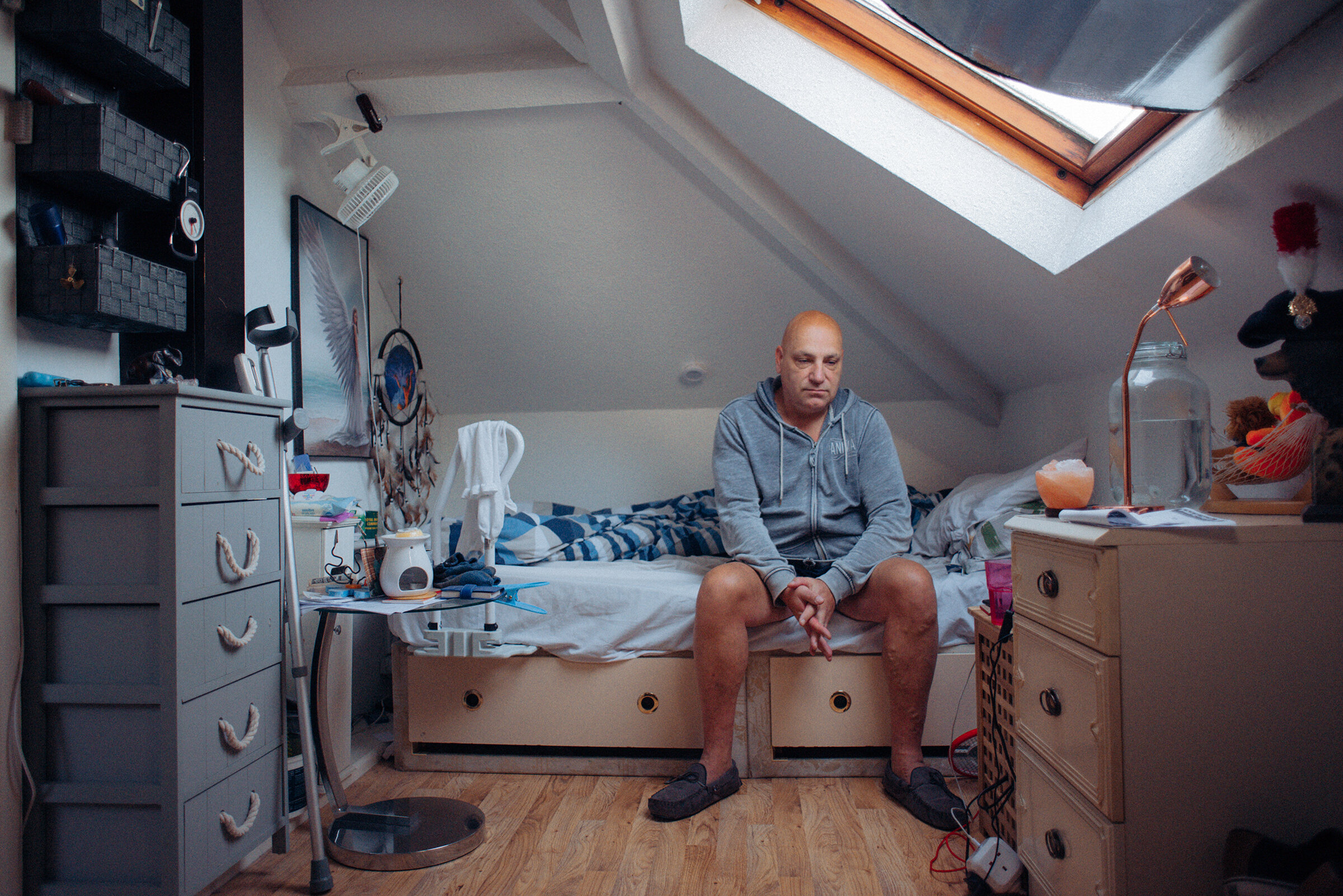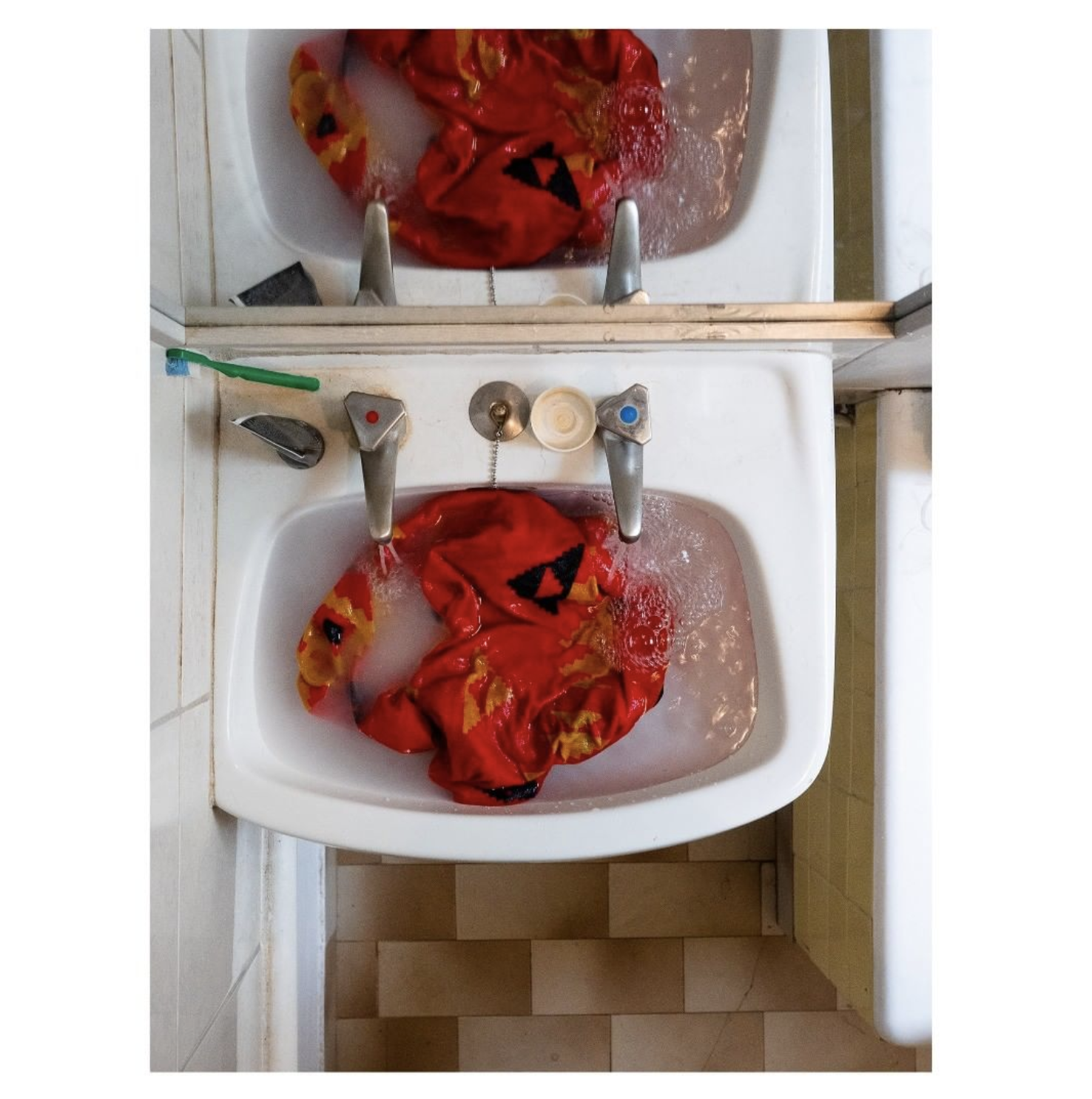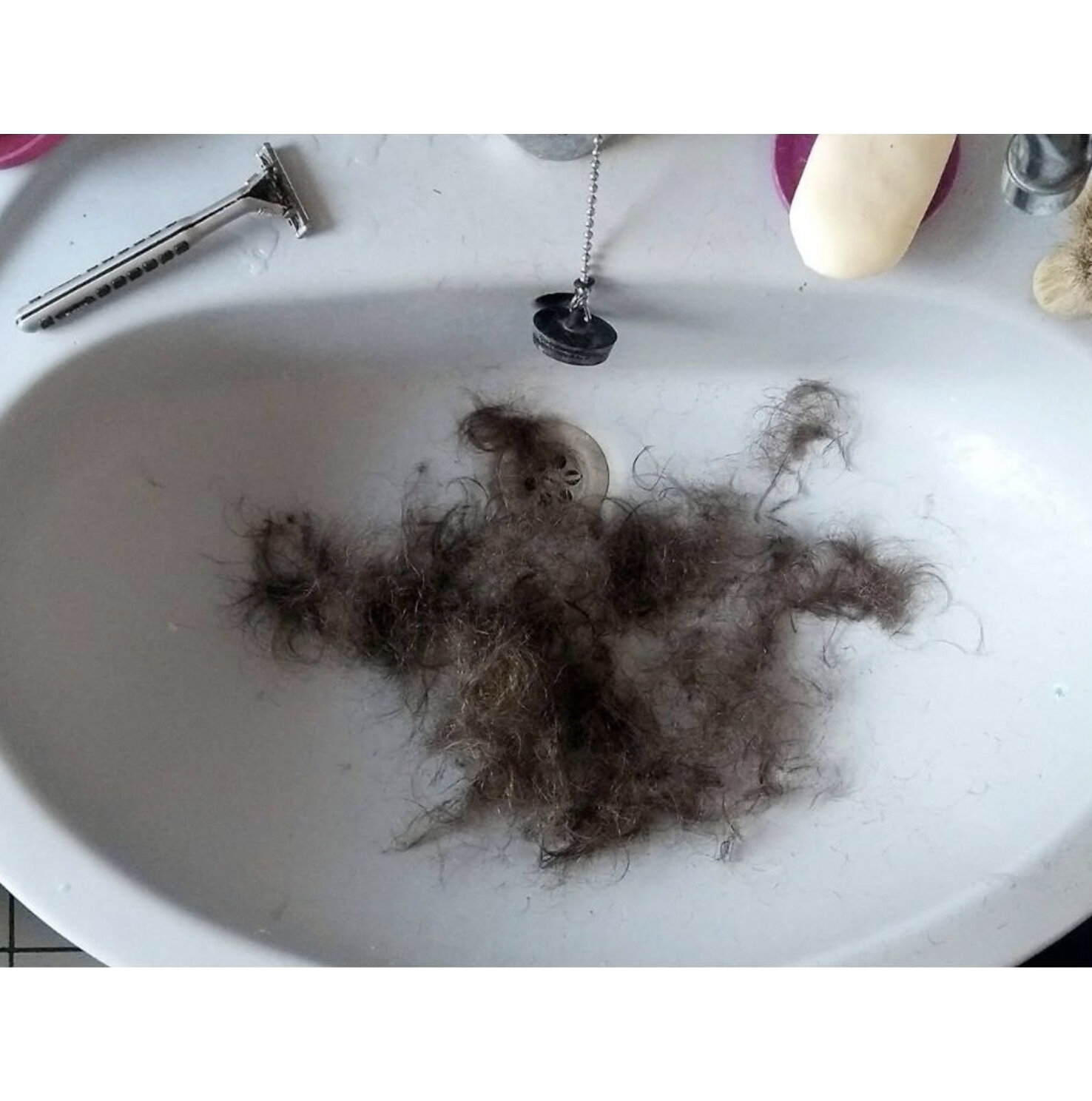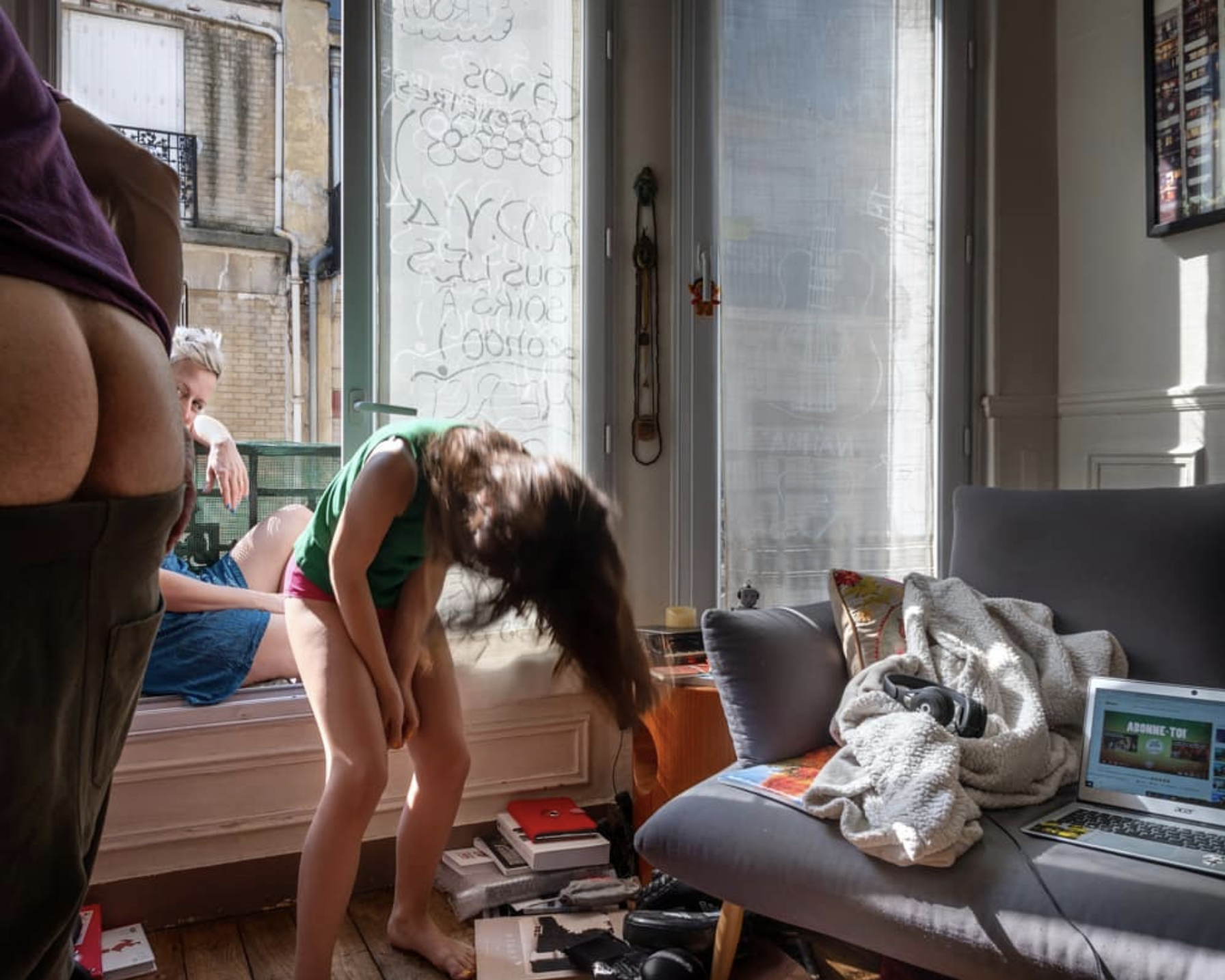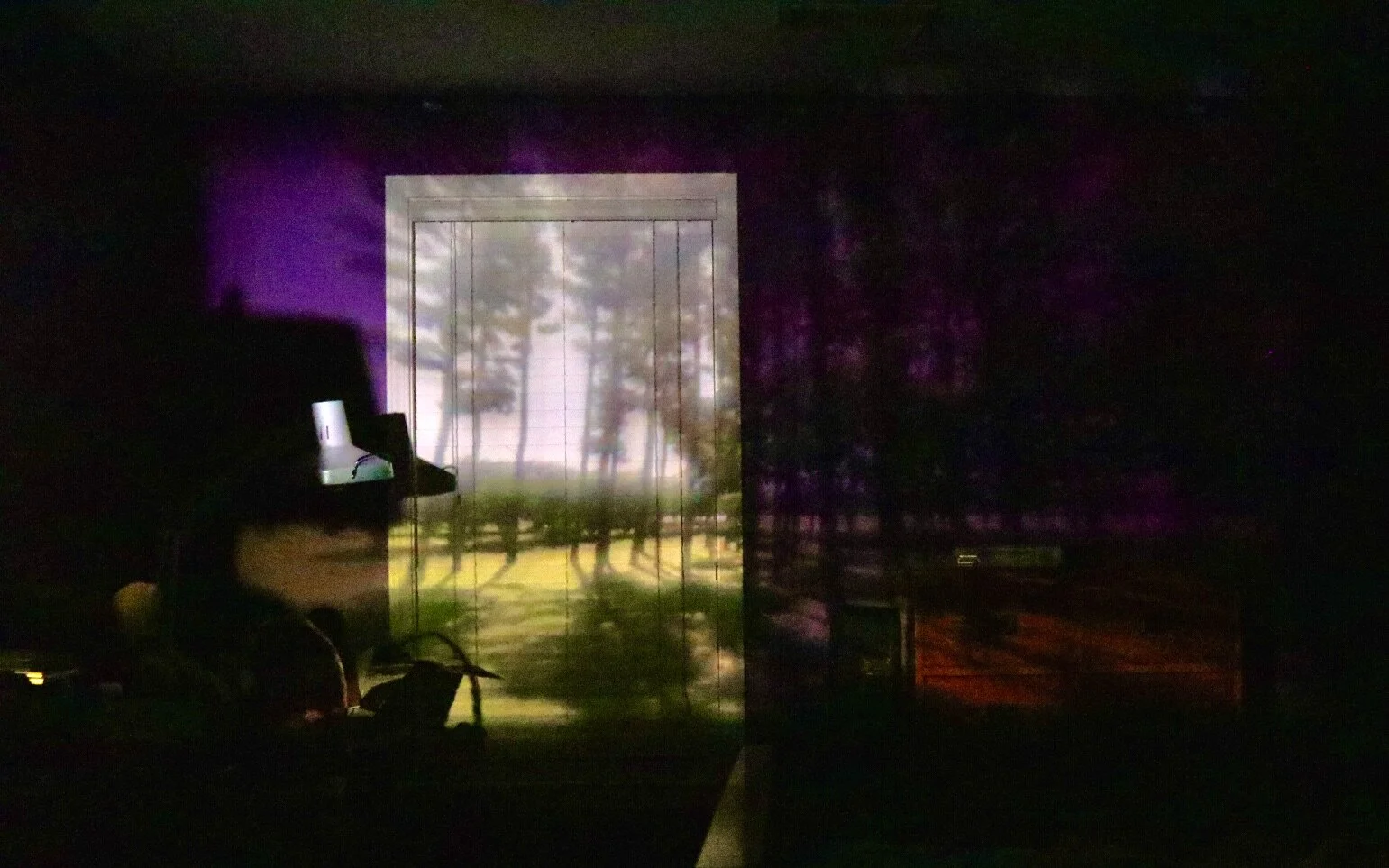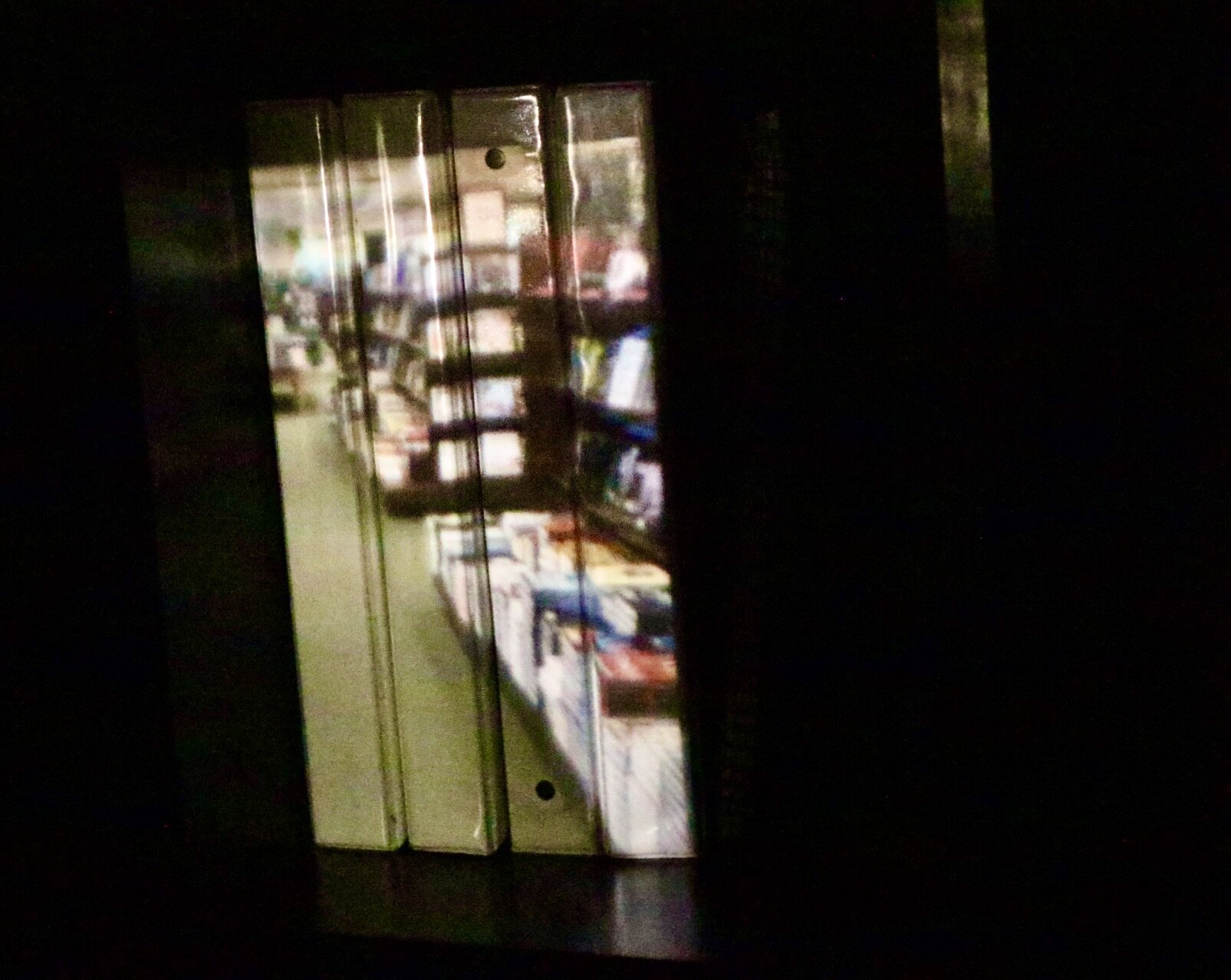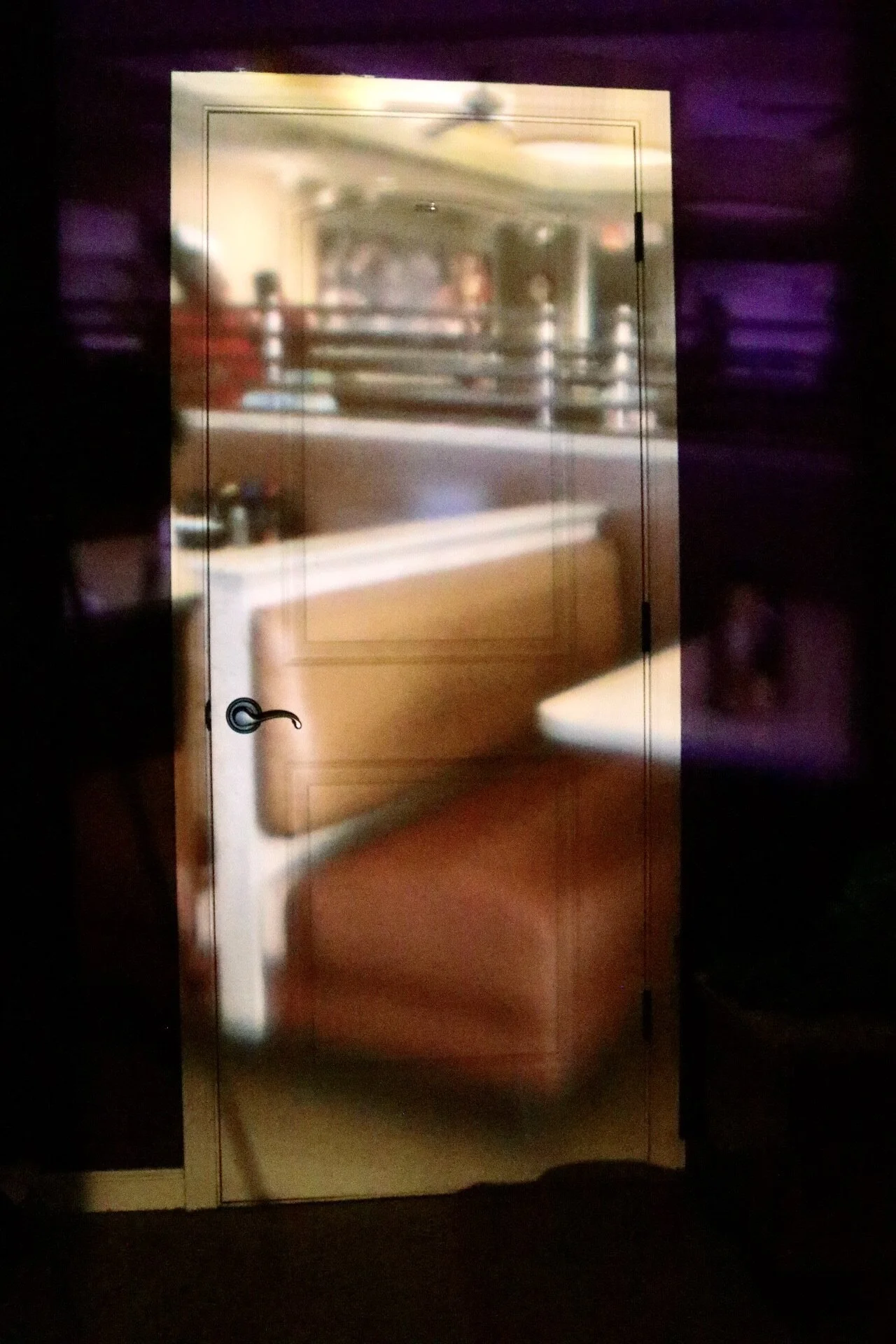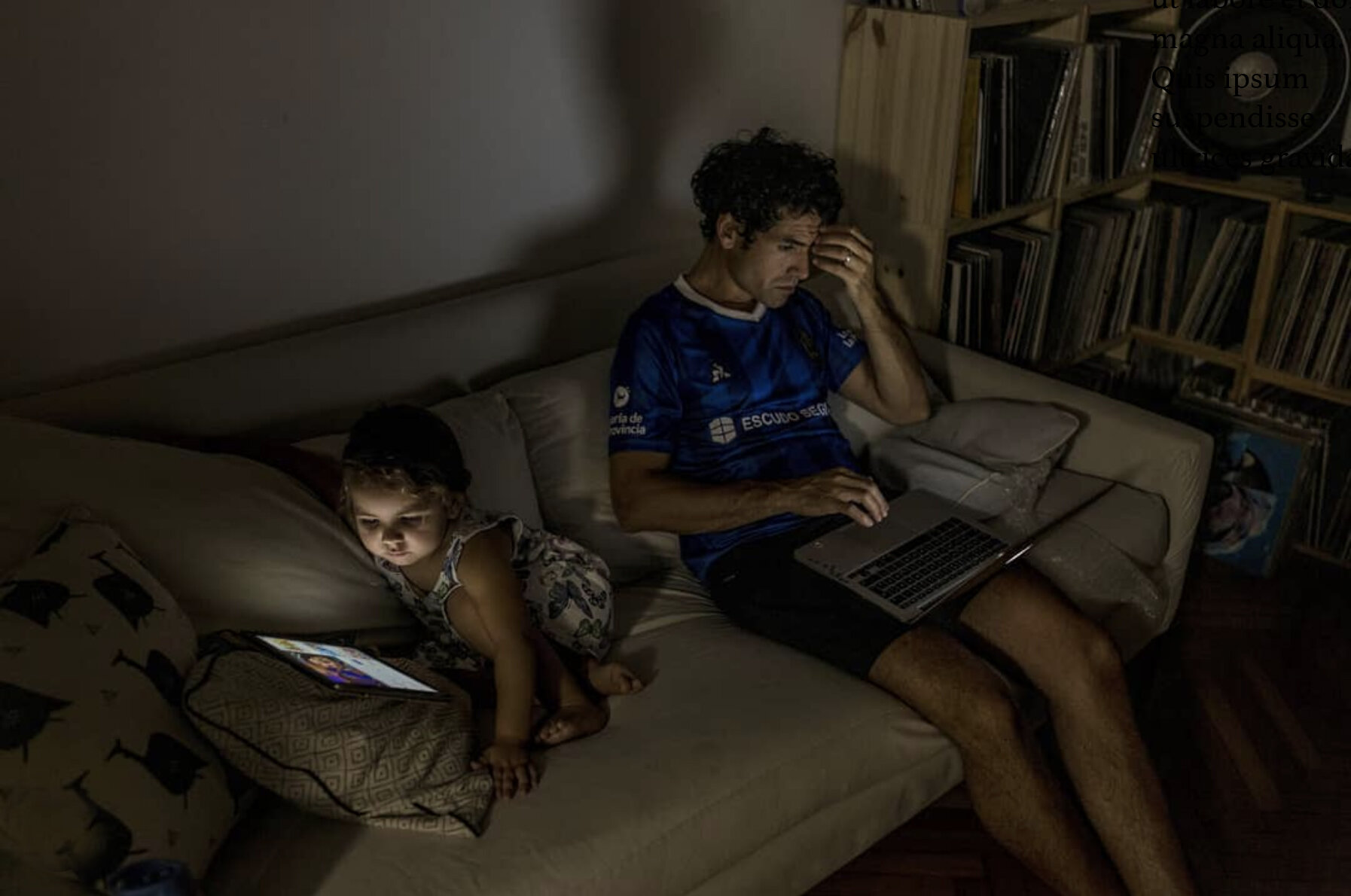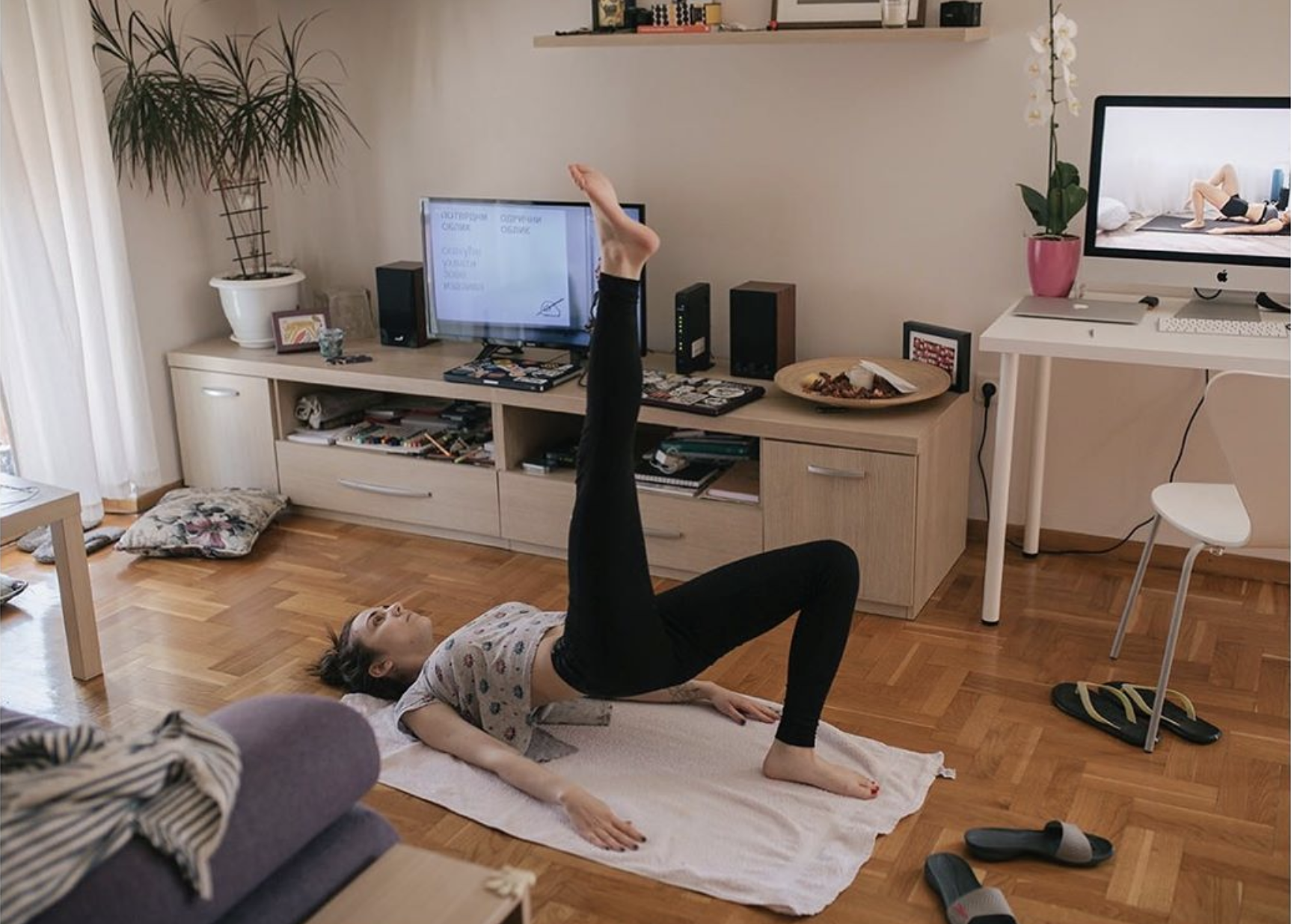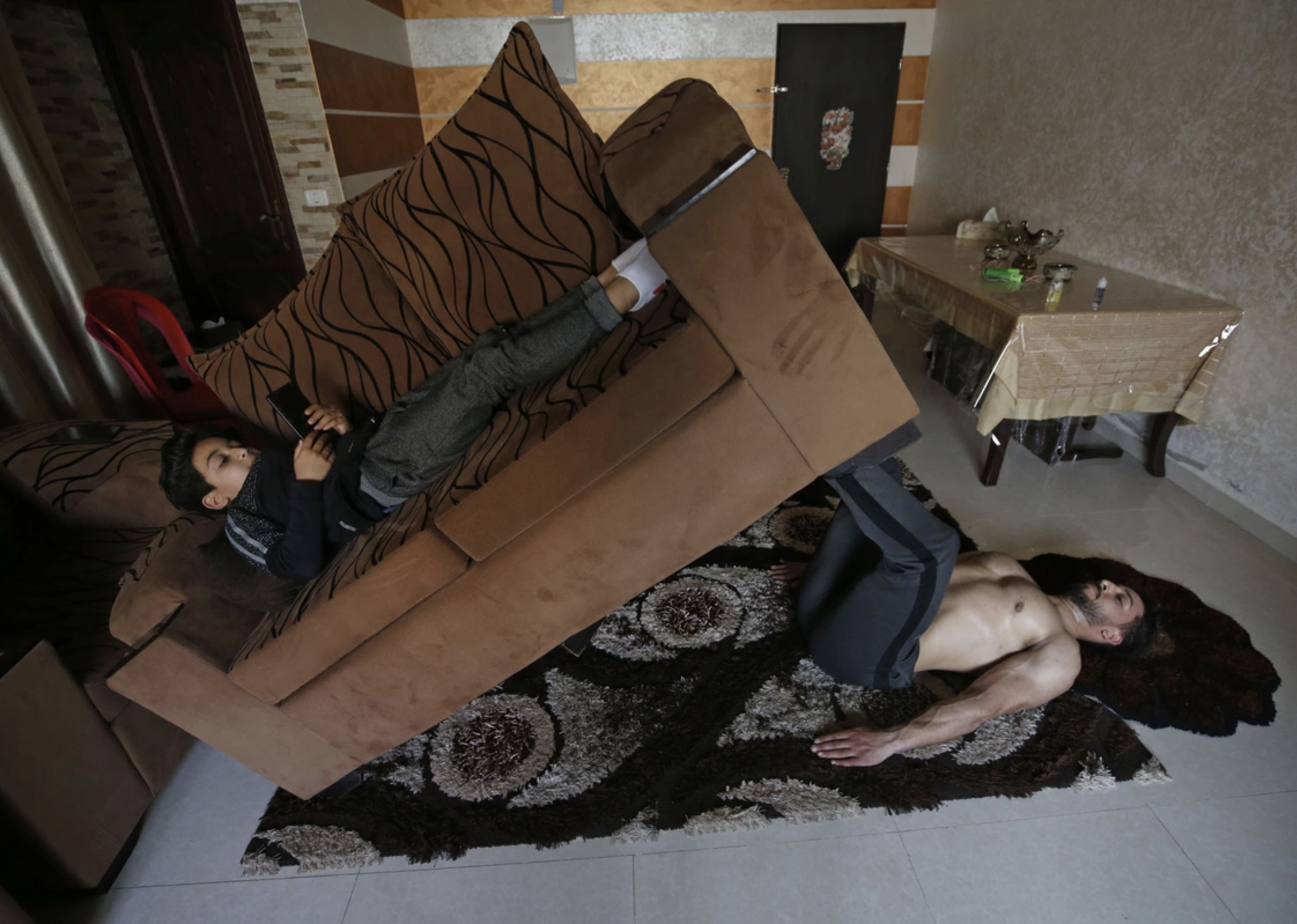
Enclosed spaces
A digitally curated collection, 2020
Cover photo by Matthew Ludak
Spaces that were once familiar from pre-quarantine life have changed subtly and dramatically. Humans are creatures of habit and when their habitat changes, so do they. This series explores our relationship to familiar spaces in an unfamiliar time.
“Some 24 million people watched as Queen Elizabeth II addressed the UK in a special broadcast from Windsor Castle about the coronavirus outbreak. She thanked front-line workers, called on the public to ‘remain united and resolute’ and promised: ‘We will meet again’” Anthony Devlin from BBC News
“My mom leaves dinner outside my bedroom door on a wooden tray and knocks gently. I open and look down: It’s spaghetti with chicken. Once finished, I take the tray into the kitchen, thank her for the food, walk back into my room and close the door. My mother then wipes my bedroom doorknob vigorously with a disinfectant wipe, smokes a cigarette and turns on the TV news. These are our family dinners since I came down with mild symptoms of what I can only assume to be COVID-19.” New York, USA. Brittainy Newman taken from article from The New York Times
“The person in the photograph is a 57 years old Mikey, a former royal marine. Mikey had a car crash four years ago and his life completely changed after the accident. He suffers from PTSD, low-mood, and depression. Covid-19 worsens his conditions. He feels like a caged lion in his own home away from society. Mikey often has to draw upon his military training to fight this situation.” Plymouth, England. December 2020. Margo Ryszczuk.
“For nearly a year in 2016–17, we treated thousands of trauma patients on the front lines, so Pete and I are used to being in risky situations together. Yet with the arrival of the coronavirus, the risk and fear feels different: an invisible and insidious enemy that can be easily passed from one person to another is much more terrifying to me than a threat that is visible...” Providence, Rhode Island, USA. Alex Potter via The New York Times
“This project inquires into our perception of the domestic space and its mundane objects. As I spent the last months of lockdown mainly in the company of myself, my life partner and the domestic space we share in our Berlin flat, my perception of the surrounding space has changed, and with time suspended, every ordinary element has transformed into a still life, that I have assembled by deconstructing objects, and reinvent their meaning.” Berlin, Germany. April, 2020. Sarah Stefanutti
Decorating the house quietly for the next morning. France. April 15, 2020. Marine from Ernestine et sa famille
“For the project "IN MY ROOM", young people in Europe and Asia opened the doors to their rooms to be photographed and interviewed.
During Corona the children and young people are forced to stay at home and experience the time in their room differently than before.
In the videos created during the interviews, they answer questions about their situation. From these videos, a snapshot in lockdown is created in which the affected children and young people themselves have their say.
The very personal portraits show the young people in a time of transition and transformation. Social media and selfies offer them templates for self-portrayal.
In their search for authenticity, Feli & Pepita try to break through this staging and get closer to the personality.
With "IN MY ROOM" they meet their protagonists in their private surroundings. Their room is the young people's place of retreat. The door of the room is the border to the outside world.
By opening this protected space for the artists, the young people give up their protective attitude to a certain extent. In an interplay of staging and spontaneity, the unexpected happens during the recordings and the authentic self-confident person becomes visible.” Multiple locations. Feli & Pepita
“I moved into my parents' house to take care of them. After a month, my father was still struggling to maintain his oxygen. I was there, so close but at the same time very far, just watching them. Aware of his slow recovery.” Mexico City, Mexico. July, 2020. Brenda Islas
“After a month of taking care of my parents, I return home, I am still afraid, I do not know if my return puts my girlfriend's health at risk, so I keep my distance. She reads wearing a face mask before bed.” Mexico City, Mexico. July 28, 2020. Brenda Islas
“Given I was stuck in quarantine I could not go to the places I loved most so I brought them to me. I found photos of the places I wanted to be online, built a projector, and projected them onto the walls of my room to feel whole again.” Memphis, Tennessee. September 24, 2020. Ashley Perkins
“Days roll by and some are the same, others are different. Time has become a different concept. After feeling angry and sad yesterday, today’s rainy mood somehow calmed me. When quarantine started I first felt some strange kind of relief, that this obligatory pause would finally give me time for all the things I never have time to. But it’s not that easy... raising a child in quarantine includes so many new challenges. And in the end we find ourselves only having time when she either sleeps or during screen time. So on some days screen times extend and with extending screen times also my guilt often increases. I ask myself, why is motherhood so often connected to guilt? And then I lie next to her and we watch Frozen for the 2149383th time and I push the guilt away and just enjoy this pause.” Buenos Aires, Argentina. April 13, 2020. Sarah Pabst
“This was my room during mandatory hotel quarantine in Melbourne, Australia. Over the whole two weeks of managed isolation, I left my room once to go for a walk in a small outside area (wearing a mask) whilst supervised by the security guards. I took my university exams online while in this room. Longest two weeks of my life.” Melbourne, Australia. September 13, 2021. Petra Green (development and scan of this photo was done by Film Never Die in the Melbourne CBD)
“Tiny pleasures… May was a warm month and our quarantine was beginning to feel heavy. A trip to the rooftop or an inflatable pool felt like a small vacation.” Mexico State. May 10, 2020. Iris Epstein
“How many times in this pandemic we have been sharing the same feelings, same attitude, same time and the same space together whether we want it or not ... at the end time passes and the situation remains the same. We still together in this COVID.” Mexico. November 1, 2020. Laura Gutierrez
“With fewer cars on the normally busy main road near our home, we’ve started hearing the chorus of songbirds migrating through the area. With the chirping as the soundtrack, my three-year-old daughter spends quiet time using the windows as he canvas” Silver Springs, Maryland, USA. Greg Kahn via National Geographic
“At my boyfriend's apartment in Providencia, Santiago de Chile. First week of April during a complete lockdown. He is divorced and these are his kids Rosario (6) and Francisco (8) named after his father while visiting after a month they didn't see each other. We were not sure if we were following the rules as nobody has talked about how to manage divorced kids and quarantine here in Chile. On my side, I was in Chile just for vacations and never could fly back to my home in NYC.” Santiago, Chile. April 2020. Daniela Clementi
“While myself in quarantine, or, more precisely, spending long days and nights locked into my apartment in Belgrade during the government-imposed curfews, I rolled my camera into a plastic bag and let it ’see’ the world – or whatever there was available of the world around me – through the constantly shifting and slightly opaque layer of plastic: a form of quarantine I designed for my otherwise sharp-focused camera.
I decided to give my symbolically protected photographic equipment the role of an independent observer, and the liberty of not having a clear perspective, just as I myself didn’t have a clear perspective about the Covid-19 pandemic outcome.
Therefore, I ’identified’ myself with my camera, in order to go with the flow, experiment, and express my inner feelings during the peak of the pandemic in the best way I could, in spite of the fact that the camera and I were both ’in quarantine’, or at least, in suffocating isolation. I created the symbolic visual diary of a camera in quarantine, that resulted in images illustrating an array of situations, moods and emotions in the daily life of the period.”
'Diary of a Camera in Quarantine'. Belgrade, Serbia. 2020. Katarina Radovic
The photographers
This exhibition is a curation of known professional photographers, as well as images taken by everyday people, capturing the realities of the world during the COVID-19 pandemic. Photographs have been curated from news sources as well as social channels.





